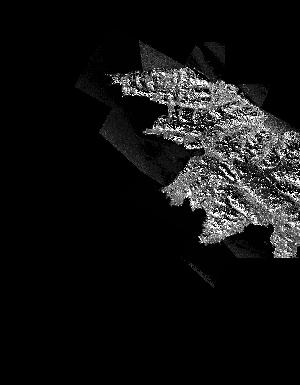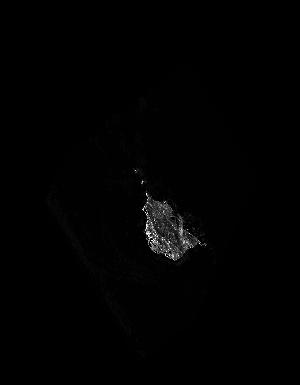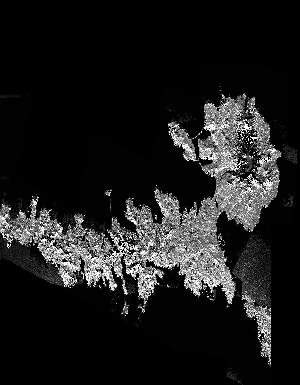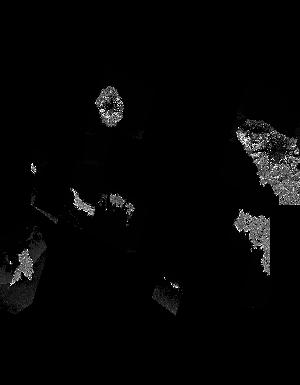Filters
Date Range
Types
Contacts
Tag Types
Tag Schemes
|

These data are orthorectified radar intensity images (ORI) derived from interferometric synthetic aperture radar (ifsar) data. An ORI is a high-resolution image derived from ifsar which has geometric distortions removed. Unlike optical imagery, ifsar can be collected in cloudy conditions. The USGS performs minimal quality assurance and no reprocessing of the ORI data. USGS distributes the ORI data as received from the contractors, partners or contributing entities.
Types: Citation;
Tags: Cartography,
Digital Mapping,
Downloadable Data,
Elevation,
Elevation, All tags...
GIS,
Geodata,
High Resolution,
IFSAR,
Ifsar Orthorectified Radar Image (ORI),
Image,
Imagery,
Imagery,
Interferometric Synthetic Aperture Radar,
Mapping,
ORI,
Orthorectified radar intensity imagery,
Raster,
TIFF,
U.S. Geological Survey,
US,
USGS,
United States,
Varies,
imageryBaseMapsEarthCover, Fewer tags

These data are orthorectified radar intensity images (ORI) derived from interferometric synthetic aperture radar (ifsar) data. An ORI is a high-resolution image derived from ifsar which has geometric distortions removed. Unlike optical imagery, ifsar can be collected in cloudy conditions. The USGS performs minimal quality assurance and no reprocessing of the ORI data. USGS distributes the ORI data as received from the contractors, partners or contributing entities.
Types: Citation;
Tags: Cartography,
Digital Mapping,
Downloadable Data,
Elevation,
Elevation, All tags...
GIS,
Geodata,
High Resolution,
IFSAR,
Ifsar Orthorectified Radar Image (ORI),
Image,
Imagery,
Imagery,
Interferometric Synthetic Aperture Radar,
Mapping,
ORI,
Orthorectified radar intensity imagery,
Raster,
TIFF,
U.S. Geological Survey,
US,
USGS,
United States,
Varies,
imageryBaseMapsEarthCover, Fewer tags

These data are orthorectified radar intensity images (ORI) derived from interferometric synthetic aperture radar (ifsar) data. An ORI is a high-resolution image derived from ifsar which has geometric distortions removed. Unlike optical imagery, ifsar can be collected in cloudy conditions. The USGS performs minimal quality assurance and no reprocessing of the ORI data. USGS distributes the ORI data as received from the contractors, partners or contributing entities.
Types: Citation;
Tags: Cartography,
Digital Mapping,
Downloadable Data,
Elevation,
Elevation, All tags...
GIS,
Geodata,
High Resolution,
IFSAR,
Ifsar Orthorectified Radar Image (ORI),
Image,
Imagery,
Imagery,
Interferometric Synthetic Aperture Radar,
Mapping,
ORI,
Orthorectified radar intensity imagery,
Raster,
TIFF,
U.S. Geological Survey,
US,
USGS,
United States,
Varies,
imageryBaseMapsEarthCover, Fewer tags

These data are orthorectified radar intensity images (ORI) derived from interferometric synthetic aperture radar (ifsar) data. An ORI is a high-resolution image derived from ifsar which has geometric distortions removed. Unlike optical imagery, ifsar can be collected in cloudy conditions. The USGS performs minimal quality assurance and no reprocessing of the ORI data. USGS distributes the ORI data as received from the contractors, partners or contributing entities.
Types: Citation;
Tags: Cartography,
Digital Mapping,
Downloadable Data,
Elevation,
Elevation, All tags...
GIS,
Geodata,
High Resolution,
IFSAR,
Ifsar Orthorectified Radar Image (ORI),
Image,
Imagery,
Imagery,
Interferometric Synthetic Aperture Radar,
Mapping,
ORI,
Orthorectified radar intensity imagery,
Raster,
TIFF,
U.S. Geological Survey,
US,
USGS,
United States,
Varies,
imageryBaseMapsEarthCover, Fewer tags

These data are orthorectified radar intensity images (ORI) derived from interferometric synthetic aperture radar (ifsar) data. An ORI is a high-resolution image derived from ifsar which has geometric distortions removed. Unlike optical imagery, ifsar can be collected in cloudy conditions. The USGS performs minimal quality assurance and no reprocessing of the ORI data. USGS distributes the ORI data as received from the contractors, partners or contributing entities.
Types: Citation;
Tags: Cartography,
Digital Mapping,
Downloadable Data,
Elevation,
Elevation, All tags...
GIS,
Geodata,
High Resolution,
IFSAR,
Ifsar Orthorectified Radar Image (ORI),
Image,
Imagery,
Imagery,
Interferometric Synthetic Aperture Radar,
Mapping,
ORI,
Orthorectified radar intensity imagery,
Raster,
TIFF,
U.S. Geological Survey,
US,
USGS,
United States,
Varies,
imageryBaseMapsEarthCover, Fewer tags

These data are orthorectified radar intensity images (ORI) derived from interferometric synthetic aperture radar (ifsar) data. An ORI is a high-resolution image derived from ifsar which has geometric distortions removed. Unlike optical imagery, ifsar can be collected in cloudy conditions. The USGS performs minimal quality assurance and no reprocessing of the ORI data. USGS distributes the ORI data as received from the contractors, partners or contributing entities.
Types: Citation;
Tags: Cartography,
Digital Mapping,
Downloadable Data,
Elevation,
Elevation, All tags...
GIS,
Geodata,
High Resolution,
IFSAR,
Ifsar Orthorectified Radar Image (ORI),
Image,
Imagery,
Imagery,
Interferometric Synthetic Aperture Radar,
Mapping,
ORI,
Orthorectified radar intensity imagery,
Raster,
TIFF,
U.S. Geological Survey,
US,
USGS,
United States,
Varies,
imageryBaseMapsEarthCover, Fewer tags

These data are orthorectified radar intensity images (ORI) derived from interferometric synthetic aperture radar (ifsar) data. An ORI is a high-resolution image derived from ifsar which has geometric distortions removed. Unlike optical imagery, ifsar can be collected in cloudy conditions. The USGS performs minimal quality assurance and no reprocessing of the ORI data. USGS distributes the ORI data as received from the contractors, partners or contributing entities.
Types: Citation;
Tags: Cartography,
Digital Mapping,
Downloadable Data,
Elevation,
Elevation, All tags...
GIS,
Geodata,
High Resolution,
IFSAR,
Ifsar Orthorectified Radar Image (ORI),
Image,
Imagery,
Imagery,
Interferometric Synthetic Aperture Radar,
Mapping,
ORI,
Orthorectified radar intensity imagery,
Raster,
TIFF,
U.S. Geological Survey,
US,
USGS,
United States,
Varies,
imageryBaseMapsEarthCover, Fewer tags

These data are orthorectified radar intensity images (ORI) derived from interferometric synthetic aperture radar (ifsar) data. An ORI is a high-resolution image derived from ifsar which has geometric distortions removed. Unlike optical imagery, ifsar can be collected in cloudy conditions. The USGS performs minimal quality assurance and no reprocessing of the ORI data. USGS distributes the ORI data as received from the contractors, partners or contributing entities.
Types: Citation;
Tags: Cartography,
Digital Mapping,
Downloadable Data,
Elevation,
Elevation, All tags...
GIS,
Geodata,
High Resolution,
IFSAR,
Ifsar Orthorectified Radar Image (ORI),
Image,
Imagery,
Imagery,
Interferometric Synthetic Aperture Radar,
Mapping,
ORI,
Orthorectified radar intensity imagery,
Raster,
TIFF,
U.S. Geological Survey,
US,
USGS,
United States,
Varies,
imageryBaseMapsEarthCover, Fewer tags

These data are orthorectified radar intensity images (ORI) derived from interferometric synthetic aperture radar (ifsar) data. An ORI is a high-resolution image derived from ifsar which has geometric distortions removed. Unlike optical imagery, ifsar can be collected in cloudy conditions. The USGS performs minimal quality assurance and no reprocessing of the ORI data. USGS distributes the ORI data as received from the contractors, partners or contributing entities.
Types: Citation;
Tags: Cartography,
Digital Mapping,
Downloadable Data,
Elevation,
Elevation, All tags...
GIS,
Geodata,
High Resolution,
IFSAR,
Ifsar Orthorectified Radar Image (ORI),
Image,
Imagery,
Imagery,
Interferometric Synthetic Aperture Radar,
Mapping,
ORI,
Orthorectified radar intensity imagery,
Raster,
TIFF,
U.S. Geological Survey,
US,
USGS,
United States,
Varies,
imageryBaseMapsEarthCover, Fewer tags

These data are orthorectified radar intensity images (ORI) derived from interferometric synthetic aperture radar (ifsar) data. An ORI is a high-resolution image derived from ifsar which has geometric distortions removed. Unlike optical imagery, ifsar can be collected in cloudy conditions. The USGS performs minimal quality assurance and no reprocessing of the ORI data. USGS distributes the ORI data as received from the contractors, partners or contributing entities.
Tags: Cartography,
Digital Mapping,
Downloadable Data,
Elevation,
Elevation, All tags...
GIS,
Geodata,
High Resolution,
IFSAR,
Ifsar Orthorectified Radar Image (ORI),
Image,
Imagery,
Imagery,
Interferometric Synthetic Aperture Radar,
Mapping,
ORI,
Orthorectified radar intensity imagery,
Raster,
TIFF,
U.S. Geological Survey,
US,
USGS,
United States,
Varies,
imageryBaseMapsEarthCover, Fewer tags

These data are orthorectified radar intensity images (ORI) derived from interferometric synthetic aperture radar (ifsar) data. An ORI is a high-resolution image derived from ifsar which has geometric distortions removed. Unlike optical imagery, ifsar can be collected in cloudy conditions. The USGS performs minimal quality assurance and no reprocessing of the ORI data. USGS distributes the ORI data as received from the contractors, partners or contributing entities.
Tags: Cartography,
Digital Mapping,
Downloadable Data,
Elevation,
Elevation, All tags...
GIS,
Geodata,
High Resolution,
IFSAR,
Ifsar Orthorectified Radar Image (ORI),
Image,
Imagery,
Imagery,
Interferometric Synthetic Aperture Radar,
Mapping,
ORI,
Orthorectified radar intensity imagery,
Raster,
TIFF,
U.S. Geological Survey,
US,
USGS,
United States,
Varies,
imageryBaseMapsEarthCover, Fewer tags

These data are orthorectified radar intensity images (ORI) derived from interferometric synthetic aperture radar (ifsar) data. An ORI is a high-resolution image derived from ifsar which has geometric distortions removed. Unlike optical imagery, ifsar can be collected in cloudy conditions. The USGS performs minimal quality assurance and no reprocessing of the ORI data. USGS distributes the ORI data as received from the contractors, partners or contributing entities.
Tags: Cartography,
Digital Mapping,
Downloadable Data,
Elevation,
Elevation, All tags...
GIS,
Geodata,
High Resolution,
IFSAR,
Ifsar Orthorectified Radar Image (ORI),
Image,
Imagery,
Imagery,
Interferometric Synthetic Aperture Radar,
Mapping,
ORI,
Orthorectified radar intensity imagery,
Raster,
TIFF,
U.S. Geological Survey,
US,
USGS,
United States,
Varies,
imageryBaseMapsEarthCover, Fewer tags

These data are orthorectified radar intensity images (ORI) derived from interferometric synthetic aperture radar (ifsar) data. An ORI is a high-resolution image derived from ifsar which has geometric distortions removed. Unlike optical imagery, ifsar can be collected in cloudy conditions. The USGS performs minimal quality assurance and no reprocessing of the ORI data. USGS distributes the ORI data as received from the contractors, partners or contributing entities.
Tags: Cartography,
Digital Mapping,
Downloadable Data,
Elevation,
Elevation, All tags...
GIS,
Geodata,
High Resolution,
IFSAR,
Ifsar Orthorectified Radar Image (ORI),
Image,
Imagery,
Imagery,
Interferometric Synthetic Aperture Radar,
Mapping,
ORI,
Orthorectified radar intensity imagery,
Raster,
TIFF,
U.S. Geological Survey,
US,
USGS,
United States,
Varies,
imageryBaseMapsEarthCover, Fewer tags

These data are orthorectified radar intensity images (ORI) derived from interferometric synthetic aperture radar (ifsar) data. An ORI is a high-resolution image derived from ifsar which has geometric distortions removed. Unlike optical imagery, ifsar can be collected in cloudy conditions. The USGS performs minimal quality assurance and no reprocessing of the ORI data. USGS distributes the ORI data as received from the contractors, partners or contributing entities.
Tags: Cartography,
Digital Mapping,
Downloadable Data,
Elevation,
Elevation, All tags...
GIS,
Geodata,
High Resolution,
IFSAR,
Ifsar Orthorectified Radar Image (ORI),
Image,
Imagery,
Imagery,
Interferometric Synthetic Aperture Radar,
Mapping,
ORI,
Orthorectified radar intensity imagery,
Raster,
TIFF,
U.S. Geological Survey,
US,
USGS,
United States,
Varies,
imageryBaseMapsEarthCover, Fewer tags

These data are orthorectified radar intensity images (ORI) derived from interferometric synthetic aperture radar (ifsar) data. An ORI is a high-resolution image derived from ifsar which has geometric distortions removed. Unlike optical imagery, ifsar can be collected in cloudy conditions. The USGS performs minimal quality assurance and no reprocessing of the ORI data. USGS distributes the ORI data as received from the contractors, partners or contributing entities.
Tags: Cartography,
Digital Mapping,
Downloadable Data,
Elevation,
Elevation, All tags...
GIS,
Geodata,
High Resolution,
IFSAR,
Ifsar Orthorectified Radar Image (ORI),
Image,
Imagery,
Imagery,
Interferometric Synthetic Aperture Radar,
Mapping,
ORI,
Orthorectified radar intensity imagery,
Raster,
TIFF,
U.S. Geological Survey,
US,
USGS,
United States,
Varies,
imageryBaseMapsEarthCover, Fewer tags

These data are orthorectified radar intensity images (ORI) derived from interferometric synthetic aperture radar (ifsar) data. An ORI is a high-resolution image derived from ifsar which has geometric distortions removed. Unlike optical imagery, ifsar can be collected in cloudy conditions. The USGS performs minimal quality assurance and no reprocessing of the ORI data. USGS distributes the ORI data as received from the contractors, partners or contributing entities.
Tags: Cartography,
Digital Mapping,
Downloadable Data,
Elevation,
Elevation, All tags...
GIS,
Geodata,
High Resolution,
IFSAR,
Ifsar Orthorectified Radar Image (ORI),
Image,
Imagery,
Imagery,
Interferometric Synthetic Aperture Radar,
Mapping,
ORI,
Orthorectified radar intensity imagery,
Raster,
TIFF,
U.S. Geological Survey,
US,
USGS,
United States,
Varies,
imageryBaseMapsEarthCover, Fewer tags

These data are orthorectified radar intensity images (ORI) derived from interferometric synthetic aperture radar (ifsar) data. An ORI is a high-resolution image derived from ifsar which has geometric distortions removed. Unlike optical imagery, ifsar can be collected in cloudy conditions. The USGS performs minimal quality assurance and no reprocessing of the ORI data. USGS distributes the ORI data as received from the contractors, partners or contributing entities.
Tags: Cartography,
Digital Mapping,
Downloadable Data,
Elevation,
Elevation, All tags...
GIS,
Geodata,
High Resolution,
IFSAR,
Ifsar Orthorectified Radar Image (ORI),
Image,
Imagery,
Imagery,
Interferometric Synthetic Aperture Radar,
Mapping,
ORI,
Orthorectified radar intensity imagery,
Raster,
TIFF,
U.S. Geological Survey,
US,
USGS,
United States,
Varies,
imageryBaseMapsEarthCover, Fewer tags

These data are orthorectified radar intensity images (ORI) derived from interferometric synthetic aperture radar (ifsar) data. An ORI is a high-resolution image derived from ifsar which has geometric distortions removed. Unlike optical imagery, ifsar can be collected in cloudy conditions. The USGS performs minimal quality assurance and no reprocessing of the ORI data. USGS distributes the ORI data as received from the contractors, partners or contributing entities.
Tags: Cartography,
Digital Mapping,
Downloadable Data,
Elevation,
Elevation, All tags...
GIS,
Geodata,
High Resolution,
IFSAR,
Ifsar Orthorectified Radar Image (ORI),
Image,
Imagery,
Imagery,
Interferometric Synthetic Aperture Radar,
Mapping,
ORI,
Orthorectified radar intensity imagery,
Raster,
TIFF,
U.S. Geological Survey,
US,
USGS,
United States,
Varies,
imageryBaseMapsEarthCover, Fewer tags

These data are orthorectified radar intensity images (ORI) derived from interferometric synthetic aperture radar (ifsar) data. An ORI is a high-resolution image derived from ifsar which has geometric distortions removed. Unlike optical imagery, ifsar can be collected in cloudy conditions. The USGS performs minimal quality assurance and no reprocessing of the ORI data. USGS distributes the ORI data as received from the contractors, partners or contributing entities.
Tags: Cartography,
Digital Mapping,
Downloadable Data,
Elevation,
Elevation, All tags...
GIS,
Geodata,
High Resolution,
IFSAR,
Ifsar Orthorectified Radar Image (ORI),
Image,
Imagery,
Imagery,
Interferometric Synthetic Aperture Radar,
Mapping,
ORI,
Orthorectified radar intensity imagery,
Raster,
TIFF,
U.S. Geological Survey,
US,
USGS,
United States,
Varies,
imageryBaseMapsEarthCover, Fewer tags

These data are orthorectified radar intensity images (ORI) derived from interferometric synthetic aperture radar (ifsar) data. An ORI is a high-resolution image derived from ifsar which has geometric distortions removed. Unlike optical imagery, ifsar can be collected in cloudy conditions. The USGS performs minimal quality assurance and no reprocessing of the ORI data. USGS distributes the ORI data as received from the contractors, partners or contributing entities.
Tags: Cartography,
Digital Mapping,
Downloadable Data,
Elevation,
Elevation, All tags...
GIS,
Geodata,
High Resolution,
IFSAR,
Ifsar Orthorectified Radar Image (ORI),
Image,
Imagery,
Imagery,
Interferometric Synthetic Aperture Radar,
Mapping,
ORI,
Orthorectified radar intensity imagery,
Raster,
TIFF,
U.S. Geological Survey,
US,
USGS,
United States,
Varies,
imageryBaseMapsEarthCover, Fewer tags
|
|